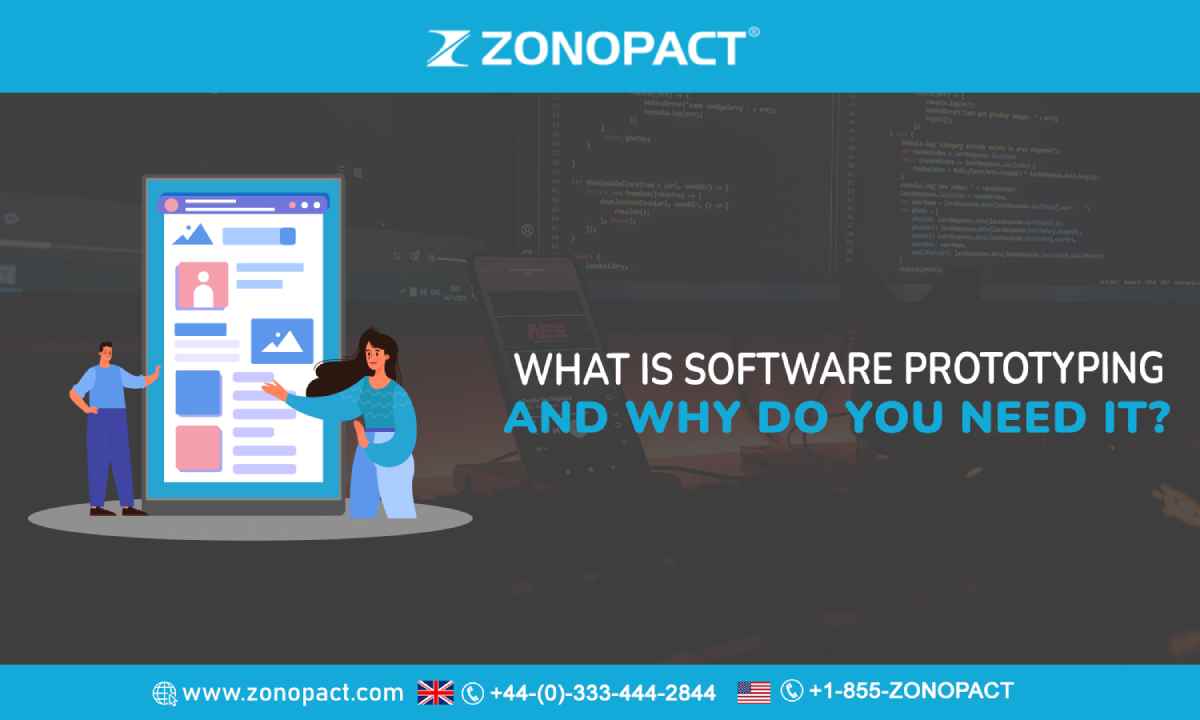
Software prototyping is the process of testing and iterating software to ensure it meets user needs. Prototyping helps you understand how users will interact with your software before development begins. It’s essentially a way for you to test your ideas and see if they are something people will want. Prototyping reduces risks and costs by enabling designers and developers to test their assumptions early in the software creation process, before significant time and resources have been spent on code and design. In this blog post, we’ll explain what software prototyping is, when you need to use it, its benefits, types of prototypes, pros and cons of the technique, as well as its main tools.
What is software prototyping?
A prototype is an early sample or model of an application, device, or system, used for testing purposes. A prototype is not a finished product, but it is designed to demonstrate a proof of concept, function, and usability. Prototyping is a critical phase in the software development process, requiring you to explore many different ideas and solutions simultaneously. Prototyping is a way of testing your assumptions and quickly iterating your designs before you have invested too much time and money into your project.
Why do you need software prototyping?
Faster Time-to-market – faster time to market reduces risk because you can see if customers like your product before you spend a lot on it. It’s easier to pivot when you’re not too far along in the development process.
Reduced Risk – prototyping helps you understand how users will interact with your product before it’s been built, so you can make the necessary changes to your designs early on.
Higher Customer Satisfaction – customers are willing to pay more for products and services when they’re happy. Prototyping can help you work out any kinks before you start coding, so you can have happy customers from day one.
Minimum Viable Product – a minimum viable product (MVP) is a product that has just enough functionality to satisfy early customers and allow the company to gauge customer growth.
Risk Reduction – you can use prototyping to test your assumptions about your customers, markets, and competition.
Types of Software Prototyping
There are three basic types of software prototyping: – – – A combination of two or more of the above types is also possible.
Benefits of Software Prototyping
Faster Time-to-market – faster time to market reduces risk because you can see if customers like your product before you spend a lot on it. It’s easier to pivot when you’re not too far along in the development process.
Reduced Risk – prototyping helps you understand how users will interact with your product before it’s been built, so you can make the necessary changes to your designs early on.
Higher Customer Satisfaction – customers are willing to pay more for products and services when they’re happy. Prototyping can help you work out any kinks before you start coding, so you can have happy customers from day one.
Minimum Viable Product – a minimum viable product (MVP) is a product that has just enough functionality to satisfy early customers and allow the company to gauge customer growth.
Risk Reduction – you can use prototyping to test your assumptions about your customers, markets, and competition.
Cons of Software Prototyping
More Time-consuming – prototyping takes more time and resources than skipping straight to coding. You may also spend more time refining your design because you’ll be testing your design assumptions.
Risk of Over-investing in Design – you might spend too much time refining your design and end up having to change your design anyway.
Risk of Over-investing in Development – if you’re building an MVP, you don’t want to spend too much time or money on your product before you know your customers want it. A prototype is meant to appear functional, but not be built to the same standard as a final product.
Risk of Too Many Features – you might decide to add too many features to your prototype, which could end up slowing your product and distracting customers with more functionality than they need.
Too Much Time Between Planning and Execution – prototyping is meant to be a quick process, but if you’re iterating on a lot of ideas, it will take longer than just starting with code.
Too Much Time Between Iterations – the point of prototyping is to quickly try out lots of ideas and then move on to the next one. If you’re spending too much time on each iteration, you may not have time to try enough different ideas.
Final Words
Prototyping allows you to explore many different ideas and solutions simultaneously before you have invested too much time and money into your project. It’s a critical phase in the software development process that requires you to test your assumptions and quickly iterate your designs. Prototyping will help you reduce risk and costs, as well as increase customer satisfaction and your company’s bottom line. It’s important to remember that prototyping is not the same as building a finished product.